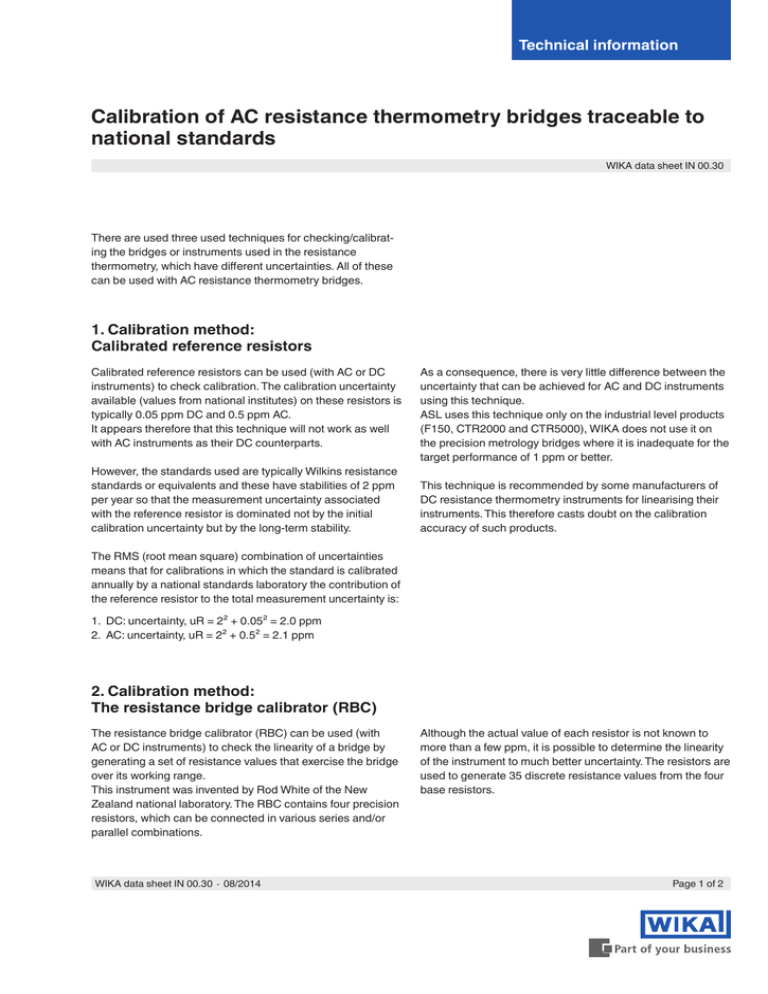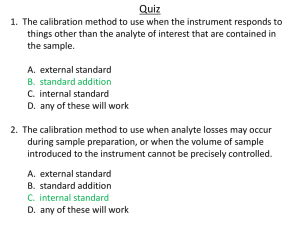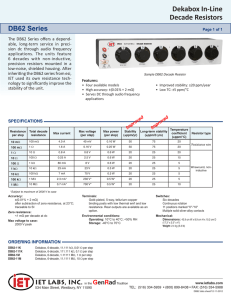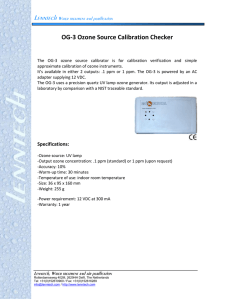
Technical information
Calibration of AC resistance thermometry bridges traceable to
national standards
WIKA data sheet IN 00.30
There are used three used techniques for checking/calibrating the bridges or instruments used in the resistance
thermometry, which have different uncertainties. All of these
can be used with AC resistance thermometry bridges.
1. Calibration method:
Calibrated reference resistors
Calibrated reference resistors can be used (with AC or DC
instruments) to check calibration. The calibration uncertainty
available (values from national institutes) on these resistors is
typically 0.05 ppm DC and 0.5 ppm AC.
It appears therefore that this technique will not work as well
with AC instruments as their DC counterparts.
However, the standards used are typically Wilkins resistance
standards or equivalents and these have stabilities of 2 ppm
per year so that the measurement uncertainty associated
with the reference resistor is dominated not by the initial
calibration uncertainty but by the long-term stability.
As a consequence, there is very little difference between the
uncertainty that can be achieved for AC and DC instruments
using this technique.
ASL uses this technique only on the industrial level products
(F150, CTR2000 and CTR5000), WIKA does not use it on
the precision metrology bridges where it is inadequate for the
target performance of 1 ppm or better.
This technique is recommended by some manufacturers of
DC resistance thermometry instruments for linearising their
instruments. This therefore casts doubt on the calibration
accuracy of such products.
The RMS (root mean square) combination of uncertainties
means that for calibrations in which the standard is calibrated
annually by a national standards laboratory the contribution of
the reference resistor to the total measurement uncertainty is:
1. DC: uncertainty, uR = 2² + 0.05² = 2.0 ppm
2. AC: uncertainty, uR = 2² + 0.5² = 2.1 ppm
2. Calibration method:
The resistance bridge calibrator (RBC)
The resistance bridge calibrator (RBC) can be used (with
AC or DC instruments) to check the linearity of a bridge by
generating a set of resistance values that exercise the bridge
over its working range.
This instrument was invented by Rod White of the New
Zealand national laboratory. The RBC contains four precision
resistors, which can be connected in various series and/or
parallel combinations.
WIKA data sheet IN 00.30 ∙ 08/2014
Although the actual value of each resistor is not known to
more than a few ppm, it is possible to determine the linearity
of the instrument to much better uncertainty. The resistors are
used to generate 35 discrete resistance values from the four
base resistors.
Page 1 of 2
These are measured using the instrument under test and
although there will be uncertainty in the measured value due
to the instrument, this generates 35 simultaneous equations
with just four unknowns (the four resistor values).
It is then possible to derive a best-fit determination of the four
resistor values and from this to derive the 35 resistances (as
a proportion of the maximum resistance) used to check the
bridge. This enables the linearity (but not the scale accuracy)
to be checked.
The scale accuracy of an AC resistance thermometry bridges
can be checked using the internal unit check function. Using
this technique it is possible to check a ASL CTR9000 bridge
(0.1 ppm accuracy) with residual linearity errors of less than
0.03 ppm.
3. Calibration method:
Ratio test unit (RTU)
Such a instrument (RTU) can be used (AC resistance
thermometry bridges only) to check the accuracy and linearity of a resistance bridge. This instrument is produced by ASL
and simulates the reference and thermometer resistances
using an inductive voltage divider (transformer) to generate
ratios of AC voltages.
Effectively this technique compares the measurement made
by the bridge’s ratio transformer with a more accurate external ratio transformer.
The advantage of this technology is that the voltage ratio
generated by the inductive voltage divider (IVD) depends
only on the turns ratio, which is stable with time and temperature (you cannot lose or gain turns).
Also, the uncertainty of these ratios and therefore of the RTU
calibration is calculable and again is stable with time and
temperature. IVD techniques are used in national standards
laboratories as inherent standards, not requiring calibration.
This instrument, the RTU, used by ASL to calibrate its
products was sent to the national standards laboratory of
Germany (PTB) for checking against their own IVDs so we do
have traceability of the calibrations at ASL back to a leading
national standards laboratory.
The uncertainty offered ranges from 0.09 ... 0.13 ppm across
the operating range and is limited by the uncertainty of the
PTB standards.
In summary, ASL's bridges are checked using the RTU that
we have determined is linear to < 0.001 ppm and which has
been calibrated by a national standards laboratory to an
uncertainty of 0.13 ppm (uncertainty limited by their standards).
The calibrations from WIKA offer are therefore traceable to
national standards. DC-based instruments usually use standard resistors to calibrate their equipment and based on an
annual calibration program the uncertainty for their traceable
calibration would be limited to 2 ppm (due to the drift rate of
their standards).
Page 2 of 2
WIKA data sheet IN 00.30 ∙ 08/2014
WIKA Alexander Wiegand SE & Co. KG
Alexander-Wiegand-Straße 30
63911 Klingenberg/Germany
Tel.
+49 9372 132-0
Fax
+49 9372 132-406
info@wika.de
www.wika.de
08/2014 GB
© 2014 WIKA Alexander Wiegand SE & Co. KG, all rights reserved.
The specifications given in this document represent the state of engineering at the time of publishing.
We reserve the right to make modifications to the specifications and materials.





